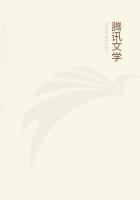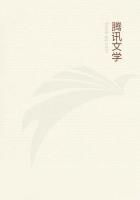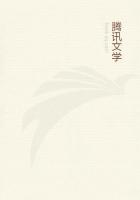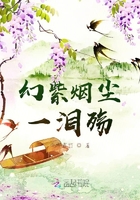I discovered that the form of the flower requires it.The modification which requires the bees to reverse is associated with the peculiar mode of pollen discharge.Smaller bumblebees and some other bees which never or rarely try to suck hang under the anthers and work out the pollen by striking the trigger-like awns.They reverse of their own accord, since they are so small they are not compelled to do so on account of the form of the flower.The tube is large...so that most bumblebee workers could easily reach the nectar if the tube were not curved in the opposite direction from that of most flowers, and if the anthers did not obstruct the entrance." Sometimes small bees, despairing of getting into the tube through the mouth, suck at holes in the flower's sides, because legitimate feasting was made too difficult for the poor little things.The ruby-throated hummingbird, hovering a second above the tube, drains it with none of the clown-like performances exacted from the bumblebee.
Pilfering ants find death as speedy on the sticky surfaces here as on any catchfly.
GREATER BLADDERWORT; HOODED WATER-MILFOIL; POP-WEED(Utricularia vulgaris) Bladderwort family Flowers - Yellow, about 1/2 in.across, 3 to 20 on short pedicels in a raceme at the top of a stout, naked scape 3 to 14 in.high.
Calyx deeply 2-lobed; corolla 2-lipped, the upper lip erect, the lower lip larger, its palate prominent, the lip slightly 3-lobed, and spurred at the base; 2 stamens; 1 pistil; the stigma 2-lipped.Leaves: Very finely divided into threadlike segments, bearing little air bladders.
Preferred Habitat - Floating free in ponds and slow streams, or rooting in mud.
Flowering Season - June-August.
Distribution - Throughout nearly the whole of North America, Cuba, and Mexico.Europe and Asia.
Here is an extraordinary little plant indeed, which, by its amazing cleverness, now overruns the globe - one of the higher order of intelligence so closely akin to the animals that the gulf which separates such from them seems not very wide after all.In studying the water-crowfoots (q.v.) and other aquatic plants, we learned why submerged leaves must be so finely cut;but what mean the little bladders tipped with bristles among the pop-weed's threadlike foliage? Formerly these were regarded as mere floats - a thoughtless theory, for branches without bladders might have been observed floating perfectly.It is now known they are traps for capturing tiny aquatic creatures: nearly every bladder you examine under a microscope contains either minute crustaceans or larvae, worms, or lower organisms, some perhaps still alive, but most of them more or less advanced toward putrefaction - a stage hastened, it is thought, by a secretion within the bladders; for the plant cannot digest fresh food; it can only absorb, through certain processes within the bladder's walls, the fluid products of decay.The little insectivorous sundew (q.v.), on the contrary, not only digests, but afterward absorbs, animal matter.Tiny aquatic creatures, ever seeking shelter from larger ones ready to devour them, enter the pop-weed bladders by bending inward the free edge of the valve, which, being strongly elastic, snaps shut again behind them instantly.
"Abandon hope, all ye who enter here," might be written above the entrance.No victim ever escapes from that prison.Scientists are not agreed that the bristles draw creatures into the bladder.
Whatever touches the sensitive valves is at once drawn in."To show how closely the edge fits," says Charles Darwin, "I may mention that my son found a daphnia which had inserted one of its antennae into the slit, and it was thus held fast during a whole day.On three or four occasions I have seen long narrow larvae, both dead and alive, wedged between the corner of the valve and collar, with half their bodies within the bladder and half out.
Professor Cohn of Germany tells of immersing a plant of this bladderwort one evening in clear water swarming with tiny crustaceans, and by the next morning most of the bladders contained them, entrapped and swimming around in their prisons.
So much for what is going on below the surface of the water: what above it? Several flowers on the showy spike attract numerous insects.One alighting on the lower lip must thrust his tongue beneath the upper one to reach the nectar in the spur, passing on its way the irritable stigma, which receives any pollen he has brought in.Instantly it is touched, the stigma folds up to be out of the way of the tongue when it is withdrawn from the spur now laden with fresh pollen.It is thus that self-fertilization is escaped.Many vigorous seeds follow in each capsule.This marvelous piece of mechanism is what Thoreau termed "a dirty-conditioned flower, like a sluttish woman with a gaudy yellow bonnet"!
Not through its seeds alone, however, has the little plant succeeded in firmly establishing itself.In early autumn the stems terminate in large buds which, falling off, lie dormant all winter at the bottom of the pond.In spring they root and put forth leaves bearing bladders, which at this stage of existence are filled with water to help anchor the plant.As flowering season approaches, the bladders undergo an internal change to fit them for a change of function; they now fill with air, when the buoyed plant rises toward the surface to send up its flowering scape, while the bladders proceed with their nefarious practices to nourish it more abundantly while its system is heavily taxed.















